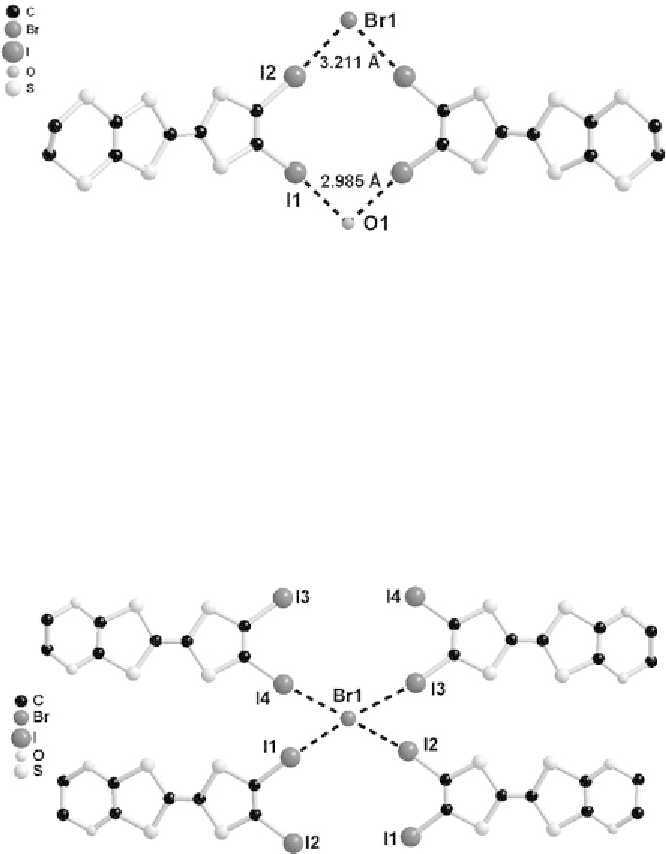Chemistry Reference
In-Depth Information
Fig. 6
Detail of the halogen bonded motif in (EDT-TTF-I
2
)
2
Br
·
(H
2
O)
2
in the adducts of tetraphenylphosphonium chloride or bromide with 1,4-
diiodotetrafluorobenzene [65]. The corresponding salts with the tetraselena-
fulvalene analogue, EDT-TSF-I
2
,arenotisostructural,asnowatermolecules
are included in the structure but rather a methylene chloride one. As a con-
sequence, one halide anion links two EDT-TSF-I
2
molecules with short
I
I angle of 121.11(2)
A
.Thetwo
molecules with the ethylenedioxo substituents, that is, EDO-TTF-I
2
and EDO-
DTDSF-I
2
, gave isomorphous salts with Cl
-
and Br
-
.Thefoursaltsarechar-
acterized by a halide anion bonded to four TTF molecules in a distorted
tetrahedral environment (Fig. 7)
Cl
-
(Br
-
) distances and an I
Br
-
···
···
···
Fig. 7
Detail of the halogen bonded motif in (EDO-TTF-I
2
)
2
Br
Cl
-
(Br
-
) distances are much
shorter than the corresponding
D
anis
distances (Table 2), indicating very
strong interactions, most probably attributable to an important electrostatic
contribution. Furthermore, these salts are highly conducting and exhibit
a variety of electronic structures, from completely two-dimensional to quasi
one-dimensional, with original TTF
In all these salts, the intermolecular I
···
···
TTF overlap patterns observed here

Search WWH ::

Custom Search